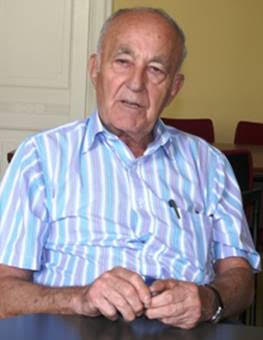
THE VOICE OF INTERNATIONAL LITHUANIA
|
VilNews has its own Google archive! Type a word in the above search box to find any article.
You can also follow us on Facebook. We have two different pages. Click to open and join.
|
Featured black
- Posted by - (4) Comment
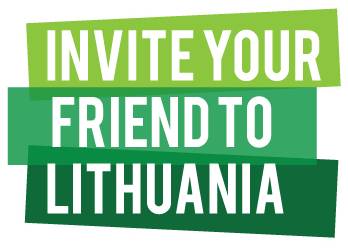
A new campaign is born! The campaign is called ‘Invite Your Friend to Lithuania’, already receiving good support from service businesses all over the country and abroad. Those who invite friends to Lithuania can even win free flights to Vilnius, Kaunas or Palanga, visit various events free of charge, get souvenirs and receive discounts different places.
People are invited to join the initiative at www.invite2lithuania.com or at the initiative’s Facebook Page where we all are encouraged to invite our friends and acquaintances to Lithuania.
The campaign seeks to invite a record number of people to visit Lithuania in 2011-2012 through Lithuanians and friends of Lithuania all around the world. The Campaign is organized by ‘Global Lithuanian Leaders’ (GLL) - a network that unites talented professionals and leaders who associate themselves with Lithuania and contribute to the continued economic, political, social and cultural transformations currently underway in Lithuania.
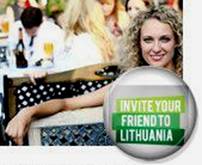
Dalia Venslovaitė
Dalia Venslovaitė, Director at GLL tells that ‘This year Lithuania has already welcomed a record number of visitors. Our goal is that people who have already visited and enjoyed Lithuania would invite others through their social networks. Moreover, we focus much on Lithuanians living abroad. They are our best ambassadors in revealing why it is worthwhile visiting Lithuania‘.
According to the Lithuanian State Department of Tourism under the Ministry of Economy, during the first quarter of 2011 there was a 39.4 % increase in tourism in Lithuania comparing to the previous year. During the latest quarter Lithuania has welcomed 150 000 tourists while the total number of tourists last year was 107 000. One tourist spends around 1.040 LTL daily. Last year an average stay of one tourist in Lithuania was 4.3 nights. Hence, one tourist alone brings around 600 LTL directly into the state budget.
- Bookmark :
- Digg
- del.icio.us
- Stumbleupon
- Redit it
- Posted by - (1) Comment
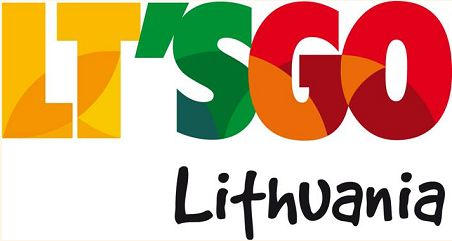
THE GREAT NARRATIVE OF LITHUANIA
(An Odyssey of Hope)
LIETUVIŠKA STRATEGIJA 21 A. LIETUVAI
(Vilties Odisėja)
Terms of Work
REBUILDING LITHUANIA ON THE ROCK OF ITS HISTORY, CULTURE, AND FAITH
A TRIBUTE TO THOSE WHO’S BLOOD AND BRAINS MADE FREE LITHUANIA POSSIBLE
Valdas Samonis
Institute for New Economic Thinking, USA
SEMI Online, Globally
SEMI Online
Punskas-Vilnius-Toronto-New York
Copyright by Valdas Samonis & SEMI Online 2011.
I started my research, thinking, and other work on Lithuania during my first high school years in Punskas, Poland, in the mid 1960s prior to my arrest, expulsion from school, as well as my long-term persecution and harassment by the communist security services for my anti-Soviet and freedom-to-Lithuania activities. Since that time, I encountered many people globally to whom I owe a lot of great inspiration and enlightenment in connection with this work, for details please see the Acknowledgements section below.
ABSTRACT. After the period of the development-retarding Soviet occupation and a frantic/chaotic search for systemic solutions in the 1988-2010 freedom-seeking, Lithuania badly needs a fresh and original approach to its socioeconomic system and its due place in the new global economy. This fresh approach, the innovative Great Narrative of Lithuania (GNL) is a qualitatively new global presentation of Lithuania; GNL will use modern economic and management theories and will be rooted in the original and unique overall Lithuanian experience assessed against the background of the world’s (esp. European) experience.
With stagflation, gyrating financial imbalances, recurring asset price bubbles, primarily in the advanced economies but also in emerging markets, there is a rapidly growing need to learn from past crises and attempts at transformations in order to boost the necessary confidence (find a new hope) and to avert or minimize new crises using the most modern knowledge management approaches, innovate in business/economic models and critical areas of institutional/systemic solutions. This is of importance globally and specifically for Lithuania as it moves away from its attempts at traditional comparative and competitive advantages to “softer” aspects of more advanced development involving new sources of those advantages and new institutions/systemic solutions that probably will be a creative blend of the Scandinavian, some Anglo-Saxon (e.g. Canada), and even Asian models (e.g. Singapore, China).
THE GREAT NARRATIVE OF LITHUANIA
REBUILDING LITHUANIA ON THE ROCK OF ITS HISTORY, CULTURE, AND FAITH
STAGES OF WORK: e-books, e-portfolios, e-cases, internet portals, modern presentations/papers, books, etc
INTRO
ECONOMIC RECOVERY OF LITHUANIA IN THE LIGHT OF THE LATEST THEORIES: Lessons from the Great Recession 2007-10 and Global Transformations;
THE MAIN BODY OF WORK
LESSONS FROM THE DEVELOPMENT HISTORY
Falling Behind: Retarding and Distorting Effects of the Soviet Occupation
Attempts at Traditional Catch-Up in Lithuanian Development 1989-2010
Demographic Change of Lithuania: A Modern Interpretation of the Destiny
The Crucial Issue of Governance in the 21st C Societies; Lessons for Lithuania
LATECOMER’S ADVANTAGE: COMPETITIVE AND COMPARATIVE ADVANTAGES OF LITHUANIA IN THE NEW GLOBAL ECONOMY, A Modern Knowledge Management Approach;
PRESENTING MODERN LITHUANIA TO THE WORLD: The Great Narrative of Lithuania;
VOX POPULI-VOX DEI: THE VIRTUAL INTERACTIVE THINK TANK FOR LITHUANIA, A Modern Digital Collaboration for Permanent Wisdom Sourcing (from Lithuania, Diaspora, and other FOLK: Friends of Lithuania of all Kinds);
NEW HOPE: NEW LITHUANIAN POLICY PARADIGMS: Scandinavian and Global Orientations.
ACKNOWLEDGEMENTS
REFERENCES
- Bookmark :
- Digg
- del.icio.us
- Stumbleupon
- Redit it
- Posted by - (1) Comment

|
Klaipeda was substantially covered in our VilNews editions |
|
Sunday 17 July |
||
|
KLAIPĖDA – the jewel in the amber crown |
Friedricho Pasažas – the new wonder of Klaipėda |
|
|
History of Klaipėda
|
Mare Suebicum |
|
|
Monday 18 July |
||
|
KLAIPĖDA MAYOR:
|
Radisson Blu Hotel, Klaipėda:
|
|
|
Tuesday 19 July |
||
|
Western Shipyard – from Soviet colossus to European greatness
|
Lido Marine – a Norwegian success story in Klaipėda
|
|
|
Wednesday 20 July |
||
|
KLAIPĖDA FREE ECONOMIC ZONE:
|
Next time you eat bacalao* in Spain or Italy |
|
|
Thursday 21 July |
||
|
Klaipedos Nafta has one of the most up-to-date oil terminals in Europe
|
The port of Klaipeda
|
|
|
WITH BOTH OIL AND LNG IN KLAIPĖDA:
|
||
|
Friday 22 July |
||
|
MEMEL CITY – A NEW 'CITY' AT KLAIPEDA'S SEA FRONT
|
4 trucks full of books every week
|
|
|
Saturday 23 July |
||
|
JAMES ANDREW CLARKE:
Click here to read the article
|
KLAIPĖDA SCIENCE And TECHNOLOGY PARK:
|
|
|
Sunday 24 July |
||
|
From Suriname to Klaipėda International Business Club
|
Klaipėda – a pioneer municipality in combating violence against women
|
|
- Bookmark :
- Digg
- del.icio.us
- Stumbleupon
- Redit it
- Posted by - (7) Comment
|
MEMEL CITY – A NEW 'CITY' AT KLAIPEDA'S SEA FRONT "A completely new face of Lithuania"- Mindaugas Žilinskas, Chairman of the Board, Memelio miestas |
|
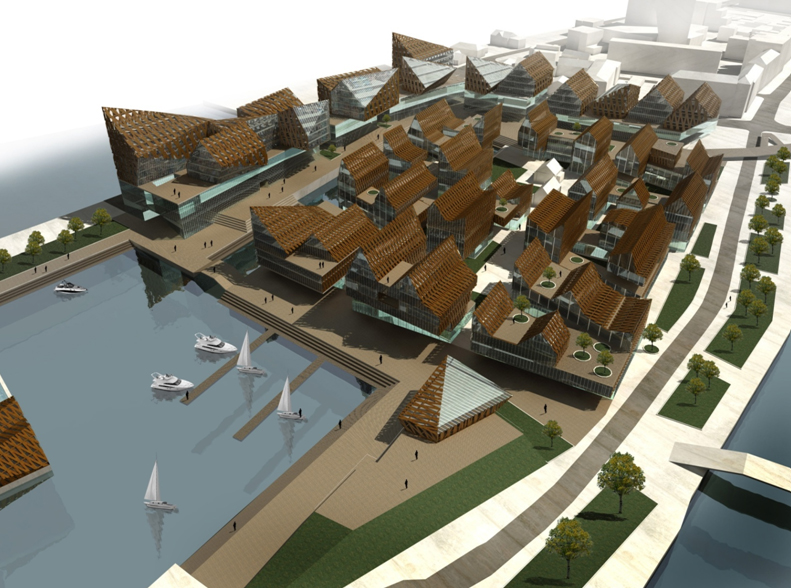
Memel City will be an immensely attractive seafront development in the Klaipeda harbour, at the Dane River mouth.
Memel City is a new ‘city’ planned built in the port of Klaipeda at the very sea front. A fantastic, amazing project that well might change the face of Lithuania!
The area where the new 'city' will be built is still a part of the port area. Here are still cranes and old production halls, and there are still ships at the dock. But in a few years this will be the most exciting town imaginable in this country. It is even likely to be Lithuania's only seafront project ever.
Memel City will be located at the mouth of the Dane river. On the other bank is planned another project with some similarities to Memel City, though in a smaller scale. The projects will be tied together by a new bridge over the river, and they will together constitute a truly unique development for Klaipeda and Lithuania.
Memel City will include several new quarters with apartments, business, offices, shops, restaurants, a hotel, night clubs, SPA, casino and much more. The quays and the closest sea area will be available for small boats and yachts.
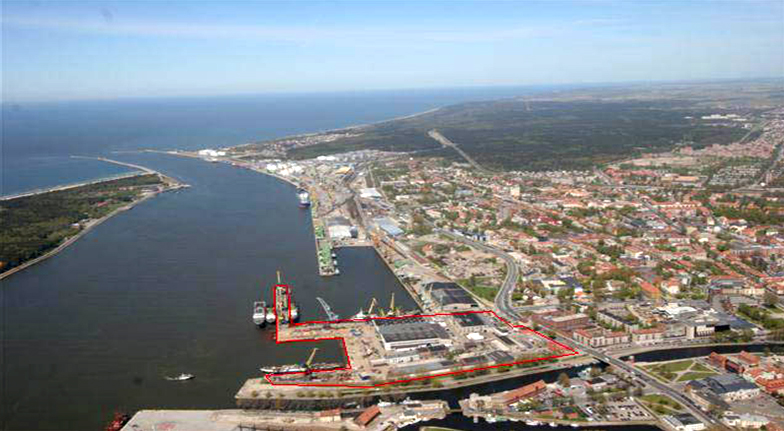
The whole territory covers 6,87 hectare, whereof 5,3 will be occupied by buildings and the rest remain as open green space, squares, outdoor restaurants and more – for joyful use and relaxation by visitors and inhabitants of the new ‘city’.
The ‘city’ will also include a seaside hotel with wonderful view to the Curonian Spit, the Lagoon, the Baltic Sea and Klaipeda city. The buildings will be constructed with 4 - 7 floors.
On the opposite side of the River Dane there is a newly renovated riverfront yacht harbour, old architectural buildings, the historic Klaipeda Castle, the cruise ship harbour - all attractive elements contributing with additional value and charm to the project.
Planned floor space:
Residential – 32.326 sq.m
Offices – 25.355 sq.m
Commercial – 19.308 sq.m
Hotel – 18.412 sq.m
Conference halls – 2.100 sq.m
SPA centers – 4.213 sq.m
Casino – 1.030 sq.m
Restaurants and cafes – 1.192 sq.m
Other – 2.389 sq.m
Reconstructed buildings – 453 sq.m
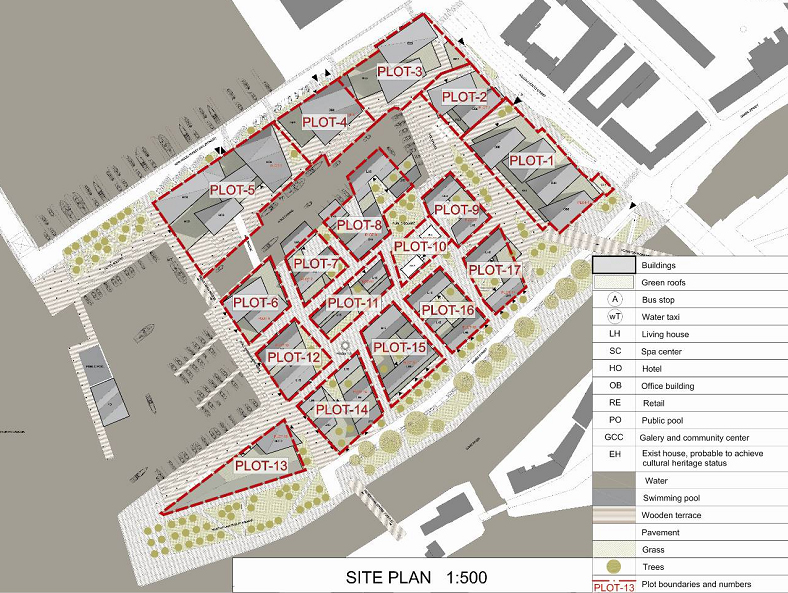
- Bookmark :
- Digg
- del.icio.us
- Stumbleupon
- Redit it
- Posted by - (4) Comment
Klaipedos Nafta has one of the most up-to-date oil terminals in Europe
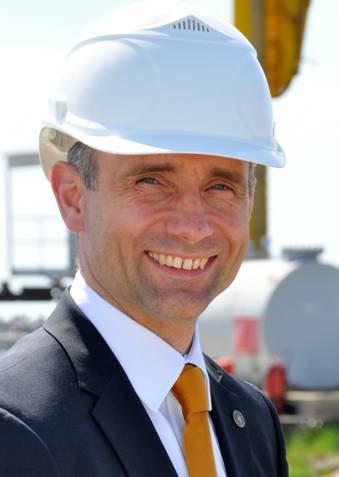
Rokas Masiulis, General Manager of Klaipedos Nafta
Rokas Masiulis interviewed by Aage Myhre
aage.myhre@VilNews.com
Rokas Masiulis has huge challenges, both behind and in front of him. As head of the giant oil terminal belonging to Klaipedos Nafta, he has had good success, and has this year also delivered remarkable economic performance for the company that in essence is owned by the Lithuanian State. Now it's planning and development of the increasingly well-publicized LNG terminal that lies in front of him. The president and the government have decided that the LNG venture will be a project of national concern, and as I’m in the process of writing this interview, the President herself is on a visit to Mr. Masiulis to ensure that the planning of the terminal proceeds 'by leaps and bounds'.
In the middle of the storm's eye Lithuania's oil-director still found time to answer my questions. His capacity is compelling...
“From your Klaipedos Nafta web page I have read that your company was founded in 1994, that it was entrusted the functions of reconstruction executive of the oil terminal which had been in operation since 1959 in the Klaipeda Seaport, and that your company became operator of the new terminal when reconstruction of the old terminal started in 1995, a reconstruction that was completed in 2002. The web page also tells that today Klaipedos Nafta is one of the most up-to-date oil terminals in Europe. Anything you would like to add about the company’s history? And please explain to our VilNews readers what the functions of an oil terminal like yours are all about?”
“SC Klaipėdos Nafta is a strategic enterprise of the Republic of Lithuania capable of unloading different oil products from rail tank cars into tankers and, when necessary, from tankers into storage tanks. SC Klaipėdos Nafta transports close to one third of all the cargoes shipped via Klaipėda Port. Our company is well known in handling so called “dark petroleum products” (fuel oil, vacuum gasoil) loading of which require special heating equipment. Our company also serves as a backup route for petroleum products import to the country in case supplies are cut from the east.”
“The Lithuanian State is the major shareholder of Klaipedos Nafta. Who are the other shareholders, and why are they involved?”
“The other shareholders comprise of joint stock companies and private persons, from which the largest is AB Achema, owning more than 9% of AB Klaipedos Nafta shares. The minority shareholders play a role as investors through shares free flow in Nasdaq OMX Vilnius.”
“You claim on your web page that experts from British Petroleum have reported positively about;
a. labour safety,
b. environmental protection
c. fire prevention means
of your Klaipedos Nafta Terminal, every year since 2001. After last year’s catastrophe in the Mexican Gulf, BP’s judgements are probably not that worthy anymore, but what can you in general say about the environmental and fire risks having a an oil terminal of this size located so close to a rather large city centre as Klaipeda is?”
“The Terminal focuses much of its attention on environment protection. Automatic fire detection and extinguishing system, computerized control system of the transshipment process, air, soil and water pollution prevention technologies fully satisfying the European standards have been introduced. Oily waters from the tankers being serviced at the Terminal are collected and treated in the modern mechanical and biological waste water treatment facilities.”
“SC Klaipėdos Nafta also pays great attention to the measures preventing air pollution with hydrocarbons. Vapour, emitted during technological process, recovery and combustion unit has been installed and is in operation where up to 98 per cent of volatile organic compounds, collected from the tanks of the vessels handled at Company’s jetties or from rail tank-cars during their loading, are being burnt. An advanced close discharge system is in operation. During loading – discharging of oil products tank-car hatches are covered with special caps with valves preventing hydrocarbon emissions into the air. Floating roofs, mounted in the storage tanks, reduce product evaporation and thus environment pollution.”
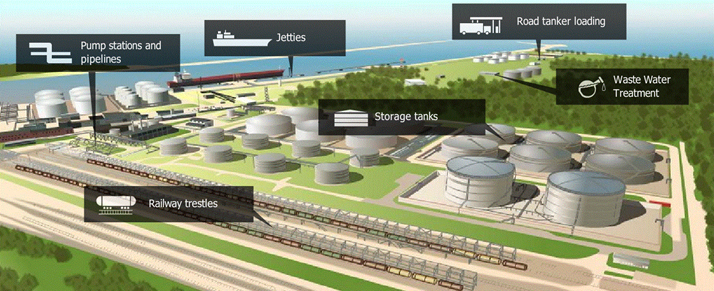
Klaipedos Nafta claims to operate one of the most up-to-date oil terminals in Europe, with the core activity to transship exported oil products from rail tank-cars into tankers, provide Lithuania with imported crude oil and oil products which are shipped to Klaipеda port by tankers.
“Last week you informed the Vilnius Stock Exchange that your profit rose 57 percent in the first half of this year due increased sales and dropped intermediaries. Net income rose to LTL 27.7 million ($ 11.4 million) from LTL 17.6 million for the first half of 2010. These are impressive figures?”
“Yes we can say a great job done through the first half of 2011. Increase of revenues during the first half of 2011 was influenced by significant factors such as successful functioning of the business model - operation without intermediaries, and after termination of a non transparent cooperation with UAB „Naftos grupe“ the Company gained about LTL 5 million (EUR 1,4 million). Additional earnings were achieved by applying increased transhipment tariffs; plus an implemented structural reorganization in the commercial sphere which added LTL 4 million (EUR 1,2 million) earnings from additional services rendered to the clients as well as successful sales in June of oil products recovered from bilge waters that brought LTL 5,7 million (EUR 1,7 million).”
“Your Lithuanian Government and President say they are ready to build a floating LNG (liquefied natural gas) terminal close to the Klaipeda port by 2014 to cut dependence on Russian gas and obtain access to the gas spot market. But I understand that the Latvians and the other Baltic neighbours are not all that convinced and will potentially decline to cooperate on this?”
“This question should be addressed to Lithuania Government and President but the main purpose to build LNG terminal in Lithuania’s security of supply which means we’re thinking of local terminal to cover Lithuania needs.”
“Your Klaipedos Nafta is in charge of the LNG terminal project. Last week you signed an agreement with Fluor Corporation , the largest publicly traded U.S. engineering company, as lead advisor on the planned terminal. You said that they will take over the project's management from July, expected to prepare the technical development plan and assist in selecting technologies, as well as working out a business plan for the terminal. The contract (so far undisclosed) with Fluor covers a period up to 2014, when you expect the terminal to come online. Please tell me more about the size and extent of this contract with Fluor and what they are supposed to accomplish?”
“Our selected lead adviser Fluor will cover financial, environmental, risk&safety, engineering and project management advice, as well as election of main parameters and support in negotiations to acquire FSRU, EPC contract. The LNG supply will be at their responsibility as well. As you see from activities listed above, Fluor will lead us through the whole project implementation period, i.e. 4 years. The contract price with them is EUR 9,229 million (excluding VAT).”
“You’ve also said in an email that Klaipedos Nafta plans the terminal to have a capacity of 2-3 billion cubic meters of gas per year, and that it will cost some EUR 200-300 million to build. Can you elucidate more on these figures? Maybe also exemplify a bit on how many gas tankers (ships) that will represent per year, etc.? And what about the environmental risks, pollution etc. having the LNG terminal located so close to Klaipeda city?”
“The main parameters are so far preliminary, so this is not the time to speculate. In 3-4 months, with Fluor advice, we will determine the main parameters and then we will have a vision of the business plan. Environmental impact assessment will determine any existing environmental risk, pollution and other risks. It is planned to have EIA report ready by the end of 2012. At the first glance it shouldn’t be a negative risk. There are several examples in the world where terminals are located very close to a city, i.e. Barcelona (Enagas).”
“The Government of Lithuania last week gave the projected LNG terminal the status of national importance, and the Cabinet approved the implementation plan, that will provide for speedier procedures of all the institutions involved in the project. This will force other departments to be more active in solving the issues related to land plots, EIA assessment and the involvement of the sea port in the project. The decision came after President Dalia Grybauskaite earlier had criticised the slow pace of the project. Does this represent lack of trust in Klaipedos Nafta’s handling of the project? What else can you say about your cooperation with the Government and the President?”
“We have to do pre-work to enter the more visible movement of the project implementation. I mean, there are lots of procedures and research to be done before engineering and EPC contracting can start, for example. SEIA, development plan, territory planning, marine research, EIA etc. have already been started. We are in close cooperation with the President, Government and other related institutions as we have at hand an ambitious national importance project.”
“How do you see the future for Lithuania’s energy supplies on the backdrop of the above? Do we really need a new nuclear power station, or will the LNG terminal and other sources be sufficient enough for this country by 2020?”
“It’s not our competence to comment on national energy strategy.”
Principle for the planned LNG terminal in Klaipeda

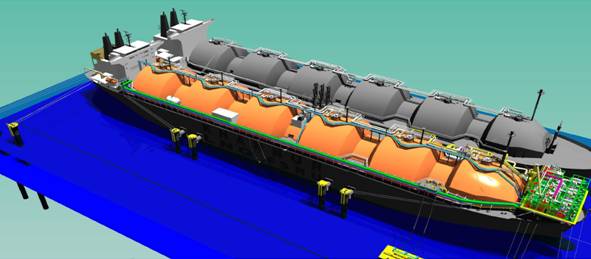
An FSRU (floating storage and re-gasification unit) will be moored to a pier (jetty) and every
arriving LNG carrier will be moored to the FSRU, side by side.
- Bookmark :
- Digg
- del.icio.us
- Stumbleupon
- Redit it
- Posted by - (2) Comment
WITH BOTH OIL AND LNG IN KLAIPĖDA:
Environmental risks?

The Kiaules Nugara (Pig’s back) island in the southern part of the Klaipeda port, at the border between the port and the Curonian Lagoon (to the left in the above illustration) is the most likely place to build Lithuania’s planned LNG terminal. This means that it will regularly sail large LNG tankers through the narrow strait between Klaipeda city and Neringa (which is now designated as one of the country’s national parks). How risky can it be to get a gas terminal and such a heavy sea traffic close to the big city that Klaipeda after all is? What about the explosion and fire risk? What about emissions and other forms of pollution? Is the water, beaches and fisheries in the Curonian Lagoon at risk? May Neringa and Klaipeda city be at risk?
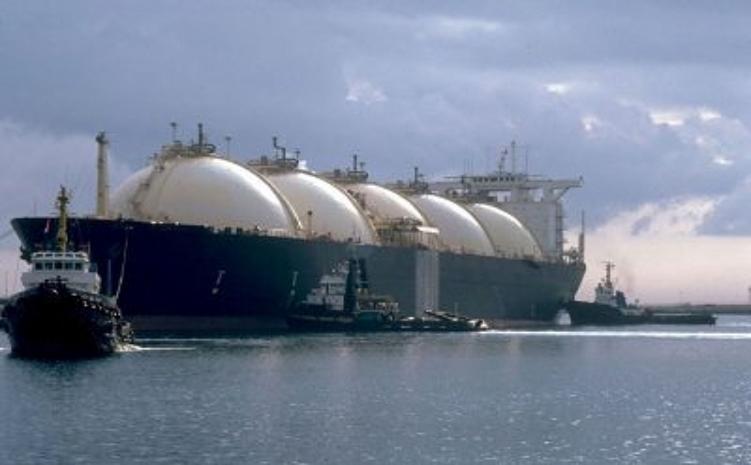
There are currently 235 liquefied natural gas (LNG) tankers in operation worldwide. New LNG tankers have an average capacity of three billion cubic feet, costing approximately EUR 180 million each. LNG tankers differ from traditional oil tankers in that their cargo, liquefied natural gas, must be cooled to extremely low temperatures (-160°C) and has slightly different characteristics than oil (including a higher propensity to burn). LNG tankers might be dangerous for environments and communities claims a new movie and web page: http://timrileylaw.com/LNG_TANKERS.htm
Principle for the planned LNG terminal in Klaipeda


An FSRU (floating storage and re-gasification unit) will be moored to a pier (jetty) and every
arriving LNG carrier will be moored to the FSRU, side by side.

Klaipeda port area is now very idyllic. Klaipedos Nafta's oil tanks (left in above photo) have certainly somehow changed this picture over the latest years, but that will be trifles in comparison to the situation that will be applicable when the LNG terminal at the inner end of the strait is completed in 2014. Let's just hope that all possible precautions are taken, and that neither LNG, oil, nor the tankers carrying the gas and oil will have negative or risky effects for Klaipeda, the sea or the beautiful, surrounding landscapes.
Aage Myhre, Editor-in-Chief
- Bookmark :
- Digg
- del.icio.us
- Stumbleupon
- Redit it
- Posted by - (2) Comment
KLAIPĖDA FREE ECONOMIC ZONE:
A magnet for international companies
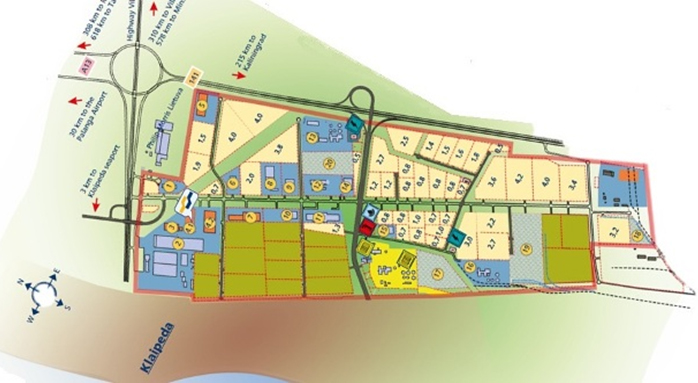
The Klaipėda Free Economic Zone (Klaipėda FEZ) was established in 1996 and opened officially in 2002. FEZ offers tax incentives to qualified investors that invest at least 1 million euros. In 2008, due to overcrowding the zone was expanded from 205 hectares (510 acres) to 412 hectares (1,020 acres) of developed land. As of March 2008, before expansion, FEZ had 22 investors: seven were operating, one just finished construction, six were under construction, and others in development stage. Web page: www.fez.lt E-Mail: info@fez.lt
The Klaipeda Free Economic Zone (FEZ) was the first and is still the only fully functioning free economic zone in Lithuania. The two companies that first started operations in the zone was the Japanese company Yazaki Wiring Technologies Lietuva, and the Danish company A.Espersen A/S, which opened their fish processing factory here in January 2003. FEZ was established to provide favourable conditions for the development of business activities by offering a prepared industrial site with a ready physical and juridical infrastructure, support services and tax incentives.
The 412 hectares area is located in a strategic position, close to the port of Klaipėda and with well developed connections to rail and road. Palanga International Airport is located only 30 km from the FEZ.
The Klaipėda FEZ has signed agreements with 20 foreign and Lithuanian capital firms, of which 16 are already operating. Since its inception, there has been invested more than LTL 792 million and created more than 1.000 jobs in the zone. The Klaipeda FEZ is recognized an ‘importance for the state project’.
During the last eight years, approximately 400 million Euros has been invested here. Business is carried on here by 16 companies from countries of Western Europe, Asia, and Scandinavia. Another four companies have already commenced construction or design works.
The Klaipėda FEZ has been recognised as an economic project of state importance. Such status of the zone ensures a favourable attitude of authorities in solving any issues that may arise.
In 2010 the Klaipėda Free Economic Zone took part in a world ranking for free economic zones, organised by the “FDI Magazine” belonging to the “Financial Times” group of publications. Out of 700 world free economic zones, which participated, the Klaipėda FEZ took 20th place. In the category ‘facilities’ the zone took 5th place.
The first in Lithuania
Klaipeda Free Economic Zone is the first and leading free economic zone in Lithuania. The advantages of setting up a business here became especially apparent after Lithuania joined the European Union in 2004. Based within the security of doing business within the EU it provides an excellent point from which to explore the vast Eastern, Western, Scandinavian and Russian markets.
Tax incentives
Companies investing in the Klaipeda Free Economic Zone will have considerable benefits in terms of no or reduced profit tax, no tax on dividends for foreign investors and no real estate taxes. These tax incentives in the Klaipeda Free Economic Zone are regarded as state aid for regional development, and therefore comply with European Union regulations.
• 6 years’ exemption from corporate income tax following made investment and 50% discount for the following 10 years –for companies that have invested more than €1 million
• No real estate taxes
• No taxes on dividends paid on foreign investments
Management
The Klaipėda FEZ is managed by a separate company that provides clients with all the necessary services in order to make the process of setting up easier and faster. The company provides the following services:
– consultations on establishing and registering enterprises and setting up businesses in the zone;
– issues permits for activities in the zone;
– informs about EU structural support opportunities for the client’s investment projects
– helps the clients’ construction and other project vs. authorities
– provides temporary start-up offices and services
– provides contacts to reliable and verified service providers and contractors.
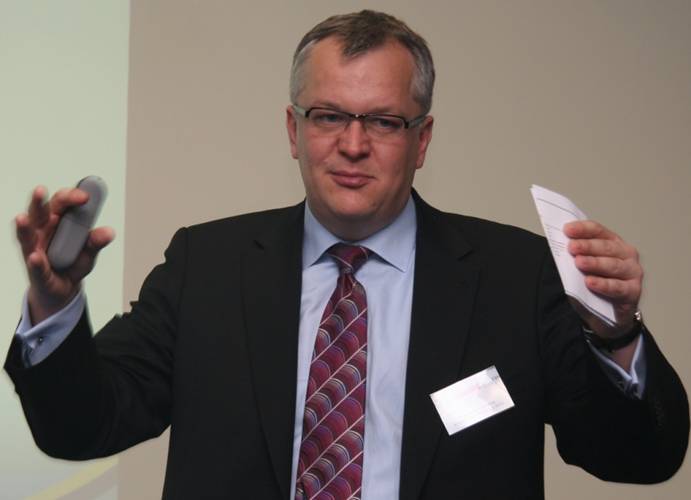
Director Eimantas Kiudulas of the Klaipeda Free Economic Zone (FEZ).
How to become a Klaipėda FEZ enterprise?
• Contact the FEZ management company by e-mail at marketing@fez.lt or by phone at +370 46 312163. Complete the investor’s questionnaire at www.fez.lt.
• Introduce your investment project, agree on the terms and conditions of doing business in the zone and sign an agreement with the Klaipėda FEZ Management Company.
• Obtain a permit for activity in the zone from the zone management company.
• Register a zone enterprise in the register of enterprises.
• Take on a sublease from the FEZ management company for a land plot or lease premises for doing business in the zone.
• Present to the tax administrator an auditor’s report, proving the amount of capital investment as prescribed by the law.
Current companies established in the zone
Klaipeda FEZ has signed agreements with 20 companies, of which 16 are operating. Their activities cover production of plastic pellets, logistics and storage, bio-diesel, electronics, appliances, architectural glass, steel constructions and a range of services.
Four new companies are now preparing their business activities in the zone:
Fortum, Heidelberg Cement, AB Ship and Nordetanolis.
Currently based in the Klaipeda FEZ are the following companies:

- Bookmark :
- Digg
- del.icio.us
- Stumbleupon
- Redit it
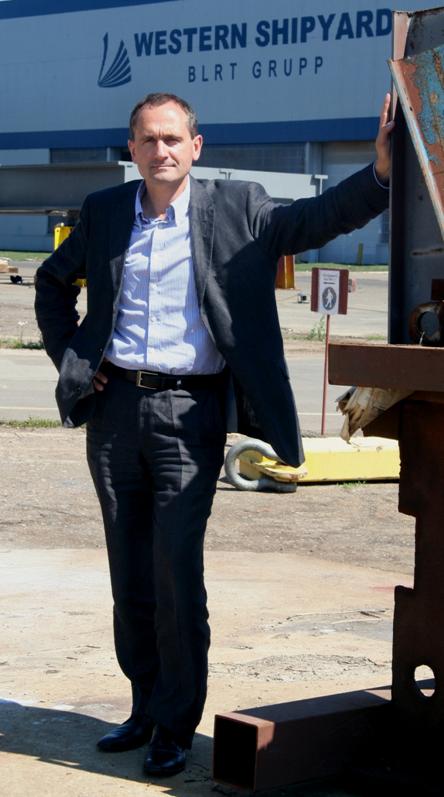
Western Shipyard’s General Director Arnoldas Šileika started to work as foreman
in the yard 22 years ago, when it still was under Soviet rule. He has been head of this
huge company since 2001, leading the transformation from Soviet times and thinking.
Western Shipyard’s General Director Arnoldas Šileika interviewed by Aage Myhre
aage.myhre@VilNews.com
I've been here before. I recall this as I pass through the guard building and the strict access control point that is the entrance to this huge shipyard furthest to the west in the Klaipeda port area. And well within the shipbuilding area, memories start flowing. I'm starting to remember details from my visit here 20 years ago, when the shipyard still was very 'semi-Soviet'.
I see the tremendously long, Soviet-like buildings, and walk along the one that is supposed to be the administrative headquarter. I finally get to the building’s end, closest to the sea, with a feeling of having gone back in time. But this feeling gradually fades as I get inside, climb the stairs to the 4th floor and walk into the corridors which are now colourful and nicely renovated, with pictures of new, modern ships and platforms on the walls. The pictures of Lenin and other communist symbols have miraculously disappeared since my last visit…
The secretaries in front of the general director's office still sit in the same reception room as by then. But now the dark, gloomy desktops are replaced with light, modern furniture, and the Soviet weightlifter-ladies have been replaced with beautiful and inviting young women, even speaking English very nicely…
And, believe it or not, the door to the general director's office is wide open! This time, there is no secretary humbly approaching the boss in his highness’ fortress behind armoured doors to ask if he graciously could accept to receive the visitor. No, now it’s the boss himself who comes smilingly out of the huge director-room, with an outstretched hand and a jovial 'welcome to our Western Shipyard! "
Hmm ... Times have obviously changed...

Western Shipyard started operations in 1969. The plan was that 9.000 people would work here.
Arnold Šileika pulls me into his office and offers a seat at the conference table in front of his desk. The tables are as large as they were 20 years ago, but now in modern, bright design. He offers me coffee, and I accept. But then I come to think that the last time I got coffee here I was served a strange sweet-sour mixture of sugar, water and coffee grounds that were almost impossible to mix into the water no matter how vehemently I used the teaspoon. Hairs rise on the back of my neck just by the thought.
But, of course, what is now being placed in front of me is obviously produced by an Italian coffee machine, and the scent is unmistakably genuine freshly brewed aromatic coffee.
My first question to the Director is related to the shipyard's history.
History – from Soviet colossus to European greatness
And Arnold Šileika is willingly telling me that the history of AB ”Vakarų laivų gamykla“ (VLG) – the Western Shipyard – started in 1966, when the construction started for a specialized ship repair yard very much directed towards Soviet’s huge fishing fleet. According to the project the yard would be the biggest and the most modern in Soviet’s northwestern region, also the biggest one in Klaipeda – with a 50 hectares territory, 3 km of quays, 100.000 square meters of production workshops and 9.000 employees.
The official opening of the Western Shipyard took place in 1969, and the first ship was put in a dock for repair that same summer 42 years ago.
The shipyard never became as big as forecasted, and in 1975 the company still had ‘only’ 2.600 employees repairing trawlers, refrigerators, plants, and fishing vessels.
After the downfall of the USSR, the huge fishing fleet became a burden for Lithuania. Ships were sold or written down to scrap. In 1993 the company restructured its activity and turned to repair of vessels from Western countries. Since then the company has been constantly strengthening its position in the markets, first of all in Western Europe.
AB "Vakarų laivų gamykla" was bought and privatized by the Estonian BLRT Grupp Concern in 2001. In 2003 the company was reorganized into the AB "Vakarų laivų gamykla" group with 23 companies within the activity fields of ship repair and modification, ship building, stevedoring and storage services, metal construction production, metal processing, hot galvanization, transport services, procurement, and more.
In 2010, Danish Odense Steel Shipyard sold its Baltijos Shiprepar yeard in Klaipeda to the BLRT Group, giving the group additional capacities, enlarging BLRT’s technical and logistical levels in developing shipbuilding in Lithuania and Estonia.
In 2007, Western Shipyard and the Norwegian company “Fiskerstrand Verft” established the joint company ”Fiskerstrand BLRT“ to deal with ship building, marketing, project management and more. The shipyard has since built several vessels for Fiskerstrand , together right now in the process of completing the construction of world's largest gas-powered ferry – for 600 passengers and 242 cars – for the Norwegian company Fjord1, one of the Norway's largest transport groups operating 63 car ferries, more than 500 busses and goods vehicles. This is one of the largest shipbuilding projects ever in Lithuania, with a total value of LTL 163.6 million (EUR 47,3 million).
Today - dramatic lack of workforce in Lithuania
Arnold Šileika has been working in the Western Shipyard since 1989, first as foreman, then as the company’s General Director for the last ten years. The company has now 2.000 employees, plus 1.000 more working on the territory for the shipyard on contract basis, totally 3.000 persons.
"You have, in other words, seen the whole transition from having been Soviet-ruled to becoming a Western company," I state.
And the director responds, still just as open and straight forward, that the biggest challenge has been to get workers to change their mentality from eastern to western ways of thinking.
"But now, today, the biggest challenge is actually to find people who want to work here," he says. "This despite the fact that we pay almost twice as high wages as what the labour market in Lithuania in general offers. We actually have had to start to bring in workers from Bulgaria and Romania to fulfill our obligations," he says.
Great importance for Klaipeda and Lithuania
The meeting with Arnold Šileika is nearing its end, and he invites me for a drive around the area that the shipyard disposes. The area is simply too big to cover on foot...
Aha, I think, now it’s probably soon time to again experience an authentic Soviet, black Volga with plush seats and curtains for the windows. The memories from 20 years ago have not let go yet, and I foresee a drive among rusting, sinking ship wrecks and a yard area full of old iron scrap, oil spills, creaking quay cranes and thousands of workers who are yelling at each other under the supervision of foremen who would make even the most hardened Soviet colonels to look bleak.
The director's car is a new Lexus, hybrid version ... The yard is dry, clean and tidy. The docked or moored vessels are all freshly painted and beautiful, almost exclusively from Western European countries. Nobody is yelling...
It finally begins to dawn on me that the Soviet times are over. That Lithuania has become a country with modern industry and service companies fully on a par with western countries.
The director's calm and professional voice reinforces this impression as he drives me around, explaining that my home country Norway is the most important partner for his Western Shipyard, but that he also supplies ships and other equipment to Denmark, Sweden, Finland, Germany, Netherlands, Italy and Russia. He says that the yard each year builds 10-12 vessels for these countries - ferries, tugboats, fishing and cargo vessels, plus boats and structures for offshore projects, and much more. He mentions especially a truly unique project that the yard completed two years ago; to build the jackup vessel Windlift 1 for an offshore windmill park. This was the largest project ever throughout the history of the Western Shipyard.
The shipyard also repairs different kinds of vessels, 100-120 every year.

The Jackup vessel Windlift I, completed in 2009, is the largest project ever throughout the history of Western Shipyard.
The General Director also tells me that Western Shipyard is the largest company in Klaipeda, also one of Lithuania's largest. He says that 90% of what the shipyard produces is exported, and that the company therefore is very important for the country’s trade balance and more. That also Klaipeda city enjoys very good benefits from the yard, that many families have their incomes from here, and that numerous shipyard partners in the west come here and leave important money in hotels, restaurants and shops.
“We are ready to accept many more contracts from Europe and other continents within vessel building or repairs. We can guarantee that we are competitive pricewise and that our quality is very high,” concludes General Director Arnold Šileika of Klaipeda’s Western Shipyard as he parks his Lexus just behind my car to see me off.
And I believe him. My initial expectation of finding a small Soviet spot here is gone. The director has convinced me that the company I now leave behind me is top modern, fully on par with shipyards in USA, Asia or Europe…
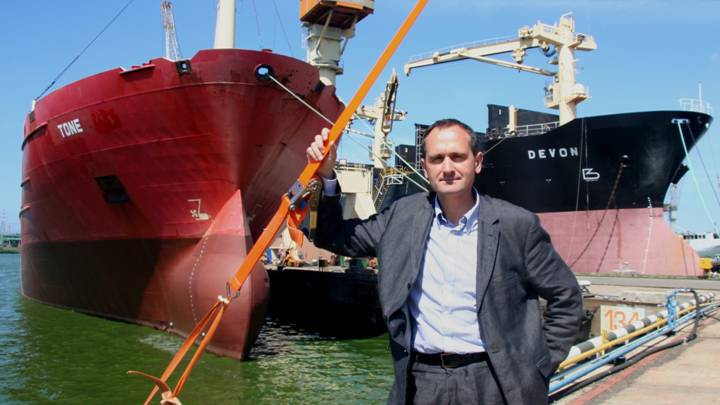
Western Shipyard’s General Director Arnold Šileika has reason to be proud of his company’s accomplishments.
- Bookmark :
- Digg
- del.icio.us
- Stumbleupon
- Redit it
- Posted by - (6) Comment
KLAIPĖDA MAYOR:
Klaipėda aims to become
an Eastern European
avant-garde city
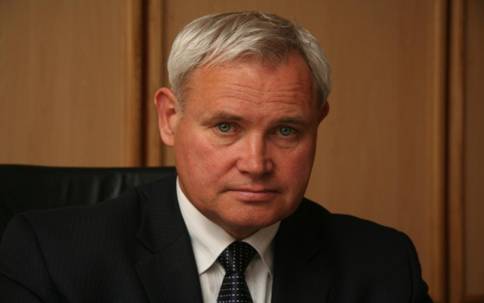
Mayor of Klaipeda, Vytautas Grubliauskas
The Mayor of Klaipeda interviewed by Aage Myhre
aage.myhre@VilNews.com
Congratulations with the post as Mayor of Klaipeda! Anything you can share with our readers about the municipal and mayor elections where the outcome was that you took over Klaipeda's main chair this spring?
Thank you. Klaipėda was always a stable and trustful city. Recent elections proved that those adjectives are true. Democratic transition in Kaunas and Vilnius was indecisive until last night or even during the mayoral voting session. Meanwhile here in Klaipeda a prospective coalition started work planning for a 4 year term already after the municipal election night. This stability brings a lot more clarity for citizens and administration.
What can you tell our readers about today's situation and the outlooks for the economy of Klaipeda?
Recession in Klaipeda lasted much shorter than in other cities. Thus it's still present in real estate sector, we bounced quickly back in other sectors. We kept quite stable consumer demand due to Klaipeda's large workforce share (appr. 40%) employed in harbour related activities that hardly experienced recession. Positive economical outlook for local companies continued city economy running in difficult times. For future, I see much unused capacity in harbour and free economical zone activities that are already best performers in whole Baltics. On the other hand I watch with uncertainty demographic decline as most difficult macroeconomic challenge for municipal budget and consumer demand. We have to cope with a shrinking city scenario.
Klaipedos Nafta is in the process of building the first LNG import terminal on the Eastern Baltic coast, for use in Lithuania and potentially for export to its Baltic region neighbours. Lithuania intends to become one of the first European countries to implement the European Union's Third Package of energy market reforms, which would result in the creation of a free and open energy market similar to what now exists in the U.S. The development of the Klaipeda LNG terminal is said to be a critical component in the plan to open the energy markets in the Baltic region. What can you say about these plans?
Klaipėda is a logistical gateway for East-West corridor, therefore our participation is self-evident. The planned LNG terminal has become a national geopolitical priority and our city will help to install it. Meanwhile as a citizen and mayor I understand the potential hazards. Although we would like to apply so called NIMBY rule (‘Not In My Back Yard’) for necessary but unwanted infrastructural objects, Klaipėda will welcome this terminal and get full package of security precautions and decent compensation for it. That’s the demand from the city.
There have been plans to create ‘a waterfront oasis’ at the territory that till now has been part of Klaipeda’s port area, on both sides of the river Dane estuary. The project was showing a better connection between Klaipeda Old Town, the cruise ship port and the Baltic Sea – for multifunctional purposes with shops, offices, apartments and green outdoor areas in direct contact with the sea. What is the stage of this project now?
Eventual projects have a symbolic meaning. They are first public access points to lagoon in former access forbidden harbour. At the same time, we hope this brownfield investment will encourage other infill developments. Yet, both waterfront projects are in post recession phase with real estate sector specific issues. The supply of such quality locations is unique in Klaipėda, therefore I hope these projects will jumpstart very soon. This will introduce totally new centrality for Klaipėda.
“Klaipeda faces difficulties in attracting cruise vessels, loses to Riga and Tallinn.” These have been headlines in local newspapers this spring. Is that true and what can in case you and the Klaipeda port authorities do about it?
Yes indeed, there is a small decline for cruise vessels this year. But very proactive discount schemes, introduced by Ministry of Transport in early winter, allow me to interpret this decline more as a prolonged recession in cruise business rather than our wrong policy. At the same time, although Klaipėda is really striving to become Lithuanian Barcelona or Miami, our size and brand is weaker than neighboring capital cities Riga and Talinn.
“Lithuanian tourism sector is haunted by poor leadership.” This said a VilNews writer in an article recently (https://vilnews.com/?p=5217).Are you planning to do something about the situation, and to make the tourism sector in your region more organised and more attractive for visitors?
Already during my first month as a mayor I organized meeting with mayors of 6 neighbour regions in order to discuss common strategy to revive tourism in Western Lithuania. The first and foremost goal is to bring new flight directions to Palanga-Klaipėda airport. We also agreed to brand the region as one unit instead of fragmented marketing. Already this summer we bring all summer events in Klaipėda under one unified advertisement campaign.
A new, extended activity field for our VilNews e-magazine, is to invite groups of people with some sort of interest in Lithuania to travel here on so-called theme-tours. We are in the process of preparing a trip for a group with interest in traditional Lithuanian food (https://vilnews.com/?p=5176), another one for people with interest in the very interesting connections between India and Lithuania (https://vilnews.com/?p=4425) , and a third one for readers of Ruta Sepetys’ bestselling novel “Between shades of gray” (https://vilnews.com/?p=2197) to come here and see and learn more about the Siberia deportations from Lithuania during WWII. Would you and the Klaipeda Municipality be interested in a cooperation?
Of course, any idea is worth to be supported. As a jazz singer I am most fond of jazz tours, which from time to time I could even guide myself. Lithuania and Klaipėda has much to offer.
One of the biggest problems that Lithuania faces today is violence against women. Statistics claims that 63% of all women in Lithuania suffered from physical and/or psychological violence, whereas world average is 33%. I have been told that Klaipeda municipality wants to be a pioneer-municipality in terms of focus on domestic violence and abuse of women. Your city has for years had a women's shelter for women, but has now taken a huge step forward and is already well underway with the planning of what is probably going to be Lithuania's most modern and advanced crisis centre for women, expected ready built in early 2012 (ref. https://vilnews.com/?p=3571). How do you see that Klaipeda can be a good example for other Lithuanian municipalities with regards to this very severe problem?
Thanks to funds from Espersen Foundation, Klaipėda becomes a pioneer in this social blind spot. What we will see with rise of this building is not a problem solution, only a shelter for severe societal problems. Although the shelter is extremely needed, Klaipėda will never be an example if violence will persist. Therefore I see immediate need for social evolution towards extermination of violence against women in general. For that we need awareness campaigns and education from early school age. Only with such package of measures I will be able to call Klaipėda as good example for other municipalities.
The Klaipeda city court has acquitted a group of ‘history enthusiasts’ for using posters with swastikas on them during the Independence Day parade on 16 February in Klaipeda. The court on 18 May ruled to terminate the administrative case against the four youth on grounds that the Swastikas used on the posters were photographs of an archaeological finding in Lithuania and initially the swastika was the sign of the sun. “These are not Nazi symbols, but valuable symbols of the Baltic culture. The symbols of our forefathers, which were taken away, fabricated and crippled by other nations. It is not fascism, but the architecture of the universe that they represent,” Milvydas Jusakauskas, the defence counsel’s witness from Vilnius said after the court hearing. What are your comments to this?
Comments on court decisions exert political pressure and I will avoid it. But despite this legal case, I want to cheer readers of “VilNews” that Klaipėda has not had any serious racially or ethnically biased criminal actions towards non-Lithuanian guests for years. Nor do I have information about neo-nazis or gangs operating in town. On opposite, Klaipėda has very peaceful community life.
Lawmakers in Lithuania's Committee on Legal Affairs, under the leadership of MP Petras Gražulis, voted recently to make even more stringent censorship legislation against homosexuals in this country, saying that they should be able to fine people for the "propagation of homosexual relations" in public. This has earned condemnation from EU groups who say this is just another step in furthering an ultra conservative agenda in Lithuania. How gay hostile can Lithuania become before someone starts appealing to normal common sense?
Opposite to any former mayors of Vilnius and Petras Gražulis himself, Klaipėda, and I personally, welcomes gay prides and gay communities. The whole idea of censorship is based on ridiculous logics, as psychologist O. Tapinas said once correctly “if you observe birds for a while you will become bird yourself”. I think we are talking about so called “10% society” and the rest 90% can’t be “persuaded” into homosexuality. Denial will only increase frustration in society.
I have heard said that if Lithuania’s politicians and bureaucrats were half as interested in the country they are supposed to serve as in their own pockets, this would already have been a fine, prosperous country. Fraud, corruption, briberies, lack of teamwork and transparency have all too often become terms used while describing the way Lithuania is managed. Do you have any clean-up plans ready?
Clear bureaucratic rules, short deadlines, e-government, well managed outsourced functions and motivated workforce is a key to more transparent municipal services. I see lots of space for improvement in Klaipėda. Biggest expectations I have towards introduction of electronic tender system and HR department.
Finally, please let our huge, international VilNews readership know what are your visions and plans for Klaipeda and the Baltic Sea region over the years to come?
I will strive for Klaipėda to become an Eastern European avant-garde city in life quality and culture. For many years we had wrong priorities. Now it is time for pure living and jazzy souls.
Greeting to sister cities by mayor of Klaipėda Vytautas Grubliauskas.
- Bookmark :
- Digg
- del.icio.us
- Stumbleupon
- Redit it
KLAIPĖDA – the jewel in the amber crown
- Posted by - (2) Comment
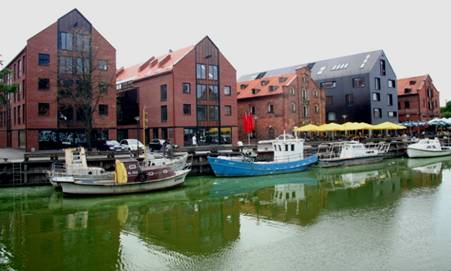
Text: Aage Myhre
aage.myhre@VilNews.com
Klaipeda, the one and only Lithuanian coastline city, is called “the jewel in the amber crown,” a term that truly suits it, although to Lithuanians living inland the city is largely regarded as simply being the country’s port on the Baltic Sea.
Yet Klaipeda, which has a venerable history dating back to 1252, is far more than that. The sea, as a commercial port and as a replenishing source of food, sustains Klaipeda’s prosperity, but vistas of the sea add to the city’s beauty, and the scent of the sea that spices the air is a health-restoring elixir that quickens the step.
We fell in love with Klaipeda on a recent weekend, and we hope that what he found will inspire you to visit this modern, maritime, melting pot of over 150,000 inhabitants. It’s a destination that you are certain to enjoy.
The 300-kilometer, divided motorway from Vilnius to Klaipėda must be the easiest superhighway to drive in all of Europe, with very little traffic on the four lanes. So, if motoring from Vilnius, simply turn on your cruise control and enjoy a relaxing, three-hour trip through scenic rural views and undulating forest vistas on your way west. For those without wheels, there’s a deluxe, express bus that connects the two cities, and should you live abroad, you can fly from a number of European cities direct to Palanga, just thirty kilometers from Klaipėda.
It quickly struck us that the look of Klaipėda differs from the inland Lithuanian cities, as it shows the influence of Germanic architecture of the Hanseatic period, with many lattice-work buildings that reflect its Prussian past. Klaipėda was formerly called Memel, which is also the German name for the Nemunas River. In contrast, Klaipeda -- its present Lithuanian name -- reflects what the terrain of this city probably looked like on its founding some 760 years ago, for Klaipeda derives from the word “klaipė pėdas,” meaning “marshy footprint.”

|
|
|
|
|
On our first venture after arrival we strolled through Klaipeda’s Old Town, starting from Theatre Square that today very much functions as a market for local souvenirs and more. In the middle of this square stands a sculpture of Ann of Tharau, dedicated to the German poet Simon Dach, who was born and lived in Klaipėda and who fell deeply in love with this girl he was never to marry. The name of this square comes from the Drama Theatre to one side. Since the 18th century this theatre has continually played an important role in the cultural life of Klaipėda; in the 19th century its façade was reconstructed in a neo-classic style. Surrounding this square are fine restaurants, lively nightclubs, a casino, and a very delightful jazz club.
|
|
|
|
Nearby Aukštoji Street was our next destination; here we discovered the oldest buildings of the city, dating back to the 18th century. Some had latticework facades while others were of brick and stucco. Interspersed between these buildings are narrow alleyways with attractive courtyards, art galleries, cafés, and small boutiques. Browsing through these labyrinths in search of interesting objects of art could consume your day, and if that isn’t enough to keep the visitor occupied, the adjacent outdoor market provides another venue for lively bargaining. When shopping, think amber, keeping in mind that Klaipėda is considered to be the amber capital!

A stroll along the Dane River
|
|
|
Klaipeda’s Old Town connects to its New Town by two bridges over the river Dane. One unremarkable bridge was built in dreary Soviet times whereas the older, more interesting bridge has a beautiful metal framework in Jugend-style with metal lamps that are reflected in the river’s calm flow. On the Old Town side, at the river’s edge, are a series of restored warehouses, containing attractive cafés and shops, that end at the ferryboat quay. Other Klaipeda attractions include a spanking new cruise ship terminal and an old castle museum that displays artifacts from the 16th to 18th centuries, among them some armor made for a possible Swedish attack!

The ferry to the Curonian Spit takes but a few minutes; it is a “must-do” trip for every visitor. While crossing you can best see the endless row of dockside cranes and ships being built or repaired. This ferry gets you to the famous Maritime Museum (normally also to the Aquarium and Dolphinarium (that now is closed for renovation until 2012). You can also view some forty species of fish from Lithuanian rivers and lakes, along with more exotic examples of aquatic life -- tropical fish, seals, and penguins. This is the sole maritime museum on the eastern coast of the Baltic Sea and it provides great fun for youngsters and the young at heart!
While you are here, do not miss driving out to Melnragė Pier for an awesome view. From this vantage point, you can see the enormous port area and the magnificent sea in panorama. It’s especiallty impressive at evening when the orange sun sinks beneath the jade-colored waves. Should you happen to arrive when the sea is stormy, a walk on the shore right after the storm may be rewarded by finding pieces of amber – Lithuania’s gold – dislodged from depths of the sea.
|
|
|
So on your mark, get set, and go. Klaipėda and the Baltic Sea await your arrival!
Places to visit
|
1. The Maritime Museum 2. Aquarium and Dolphinarium (closed for renovation until 2012) 3. The Pier in Melnragė 4. The Old Town 5. The Castle Museum 6. Biržos Bridge 7. John’s Hill 8. The History Museum of Lithuania Minor 9. The Blacksmith’s Shop Museum 10. The Nature Museum 11. Klaipeda Picture Gallery
|
12. Klaipeda Art Exhibition House 13. Klaipeda Artists’ House 14. The Drama Theatre 15. The Musical Theatre 16. Pilies Theatre 17. The statue of Ann from Tharau 18. The Clock Museum 19. The Carillon 20. Sculpture Park 21. Klaipeda University
|

- Bookmark :
- Digg
- del.icio.us
- Stumbleupon
- Redit it
Friedricho Pasažas – the new wonder of Klaipėda
- Posted by - (2) Comment

Friedricho Pasažas (Friedrich Passageway, also called Friedrich Town) – is a truly unique oasis in downtown Klaipėda (located at Tiltų Street 26a, near the city’s old market).
According to historic documents, during the rule of Friedrich III, during the period of 19-29 June 1692, this place received official permission given by the citizens to be called Friedrichsstadt (Friedrich Town) based on an act from 1639. On 9 June 1707 Friedrichsstadt received its own coat of arms which on one side features a male figure with a wreath of oak leaves, whereas the other side contains the intertwined initials FR (Friedrich Rex – King Friedrich) under a crown.
It is in the Friedricho Pasažas that you might find yourself asking; “Is this really Lithuania?” Because once you enter this cozy and lively courtyard, you will feel as if you are in a world of its own, and you will soon find yourself ready to sit down and relax, try freshly prepared fish or meat dishes, exotic salads, pizzas, or simply sip some wine or coffee.
It was in 2006 that the new owner of the courtyard and the surrounding buildings began major re-construction works with the purpose to re-create the Friedrich town, create excellent restaurants and an ambience you hardly find anywhere else in Lithuania or neighbouring states.

The former courtyard between the houses has been turned into a true, unique oasis of restaurants and small shops.
Here are the restaurants you will be met by when entering the Friedrich Pasažas:
Friedrich Restaurant features Mediterranean dishes and selected wines. The olives are brought from Spain especially for this restaurant, also marinated right here. The restaurant also offers the world-renowned cured Spanish ham (jamon), as well as locally baked Greek bread and a variety of tasty appetizers and main dishes.
Gurman‘s Tea and Coffee House invites you to try more than a hundred types of the J. Balvočiūtės herbal teas. You can also bring the teas home. In addition, this place offers a great variety of coffees, freshly made pies, buns, sweets and salads.
Friedrich Wine Restaurant offers a great selection of wines from around the world. They pride themselves in offering exclusive wines, which you might save for very special occasions. If you are celebrating your birthday or any other fantastic happening, the staff will be able to recommend champagne or sparkling wines according to any taste. They will also be happy to suggest appetizers and cheese complementing the beverages. At the wine restaurant you will also find a wide variety of wine accessories.
Friedrich Pizzeria is a special place for all who love pizzas. They specialize in authentic Italian pizzas and work hard to offer the very best! Their main goal is to keep the authentic traditions and recipes of pizza making…
Friedrich Pub is a unique place, quite different from most other pubs in Lithuania, serving traditional dishes local to the Klaipeda region and old times Lithuania, like wild quail with mashed potatoes, “Memel” gingerbread and carrot cake...It is claimed that it’s only here you can get eel in wine sauce!
Fashion Cult is a designer store that sells stylish male and female outfits as well as accessories.
Ayurveda Massage and Rituals has just opened. Their specialty lies in the connection between the healing power of both touch and smell. During the massage sessions they use natural oils and herbs. A unique heat therapy is said to help in creating natural balance, strengthens immune system, and improves blood circulation.
Trapiche Steakhouse has only recently opened its doors. The restaurant chefs’ specialty are steaks prepared to perfection over the grill. They serve traditional beefsteaks but also grill pork, fish, game and lamb.
The owners of the Friedricho Pasažas are now planning to build a glass roof over the entire passageway. A project expected to be finished by the end of 2011, making this an oasis with summer mood and continued attractiveness all year around!

The bars and restaurants at Friedricho Pasažas are all nicely furnished and decorated.
Friedrich Guesthouse

A small hotel, with six elegant suites, is also connected to the Friedricho Pasažas.
Receptionist Monika Plataunaite takes well care of all guests.
The small Friedrich Hotel or Guesthouse at the Pasažas has only six rooms, or suites if to be more correct.
The hotel is beautifully decorated and furnished, providing excellent facilities for its guests. A pearl of its own!
- Bookmark :
- Digg
- del.icio.us
- Stumbleupon
- Redit it
- Posted by - (2) Comment
Shale gas:
Energy security laced with possible ecological calamity
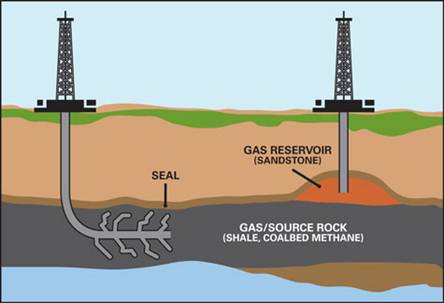
Prepared by: dr. Stasys Bačkaitis, P.E., SAE Fellow
In the last few years, the world's gas markets have and are still experiencing a revolution. Thanks to the newly developed U.S. technology, that allows drilling into shale formations and breaking them apart for extraction of gas, knowledge on how to tap into such gas resources became available to any country in the world. -This process, allowed the United States today to supply more than 23% of its internal gas needs and increase it to 40% in approx. 5-6 years. U.S. success, led many other countries to start searching for and extracting gas in their own territories. The result is a substantial decline in gas prices. Increased supply of gas and its transportation in liquefied form have become so plentiful that the United States, which had previously imported it, now began its massive export. Gas reserves are expected to increase globally in the foreseeable future at least 4% per year.
Gas extraction from shale deposits
Geologists have known for a long time about shale rocks containing gas deposits. However, the technology to reach them and to extract gases from the deposits was developed only a few years ago. In this process, rocks are drilled vertically to depths of several thousand meters. Once the desired layer of shale rock is reached, the drill head is oriented to continue drilling horizontally several kilometers away of the vertical. After the necessary underground targets are prepared, pipes are inserted into the drilled out boreholes and reinforced on the outside by blown-in concrete. Subsequently, the pipes are pressure filled with a special liquid mixture. The shale rock is penetrated by pulsating thrusts of the pressurized liquid through special openings in the pipe. As a result of the pulsating pressure, fissures in the shale rock develop and keep expanding until a desired penetration level is reached. During the expansion, sand is injected into the fissures to prevent their collapse. Upon relief of the water pressure, the compressed liquid mixture, now containing gas, shoots out like champagne from a suddenly uncorked bottle. Escaping gases are then directed by special devices to gas storage facilities.
A special liquid mixture is used in the drilling and gas extraction process. It involves millions of gallons of water, mixed with sand and special chemicals, which facilitate drilling, reduce pipe corrosion, etc. Although the chemicals are only ½ per cent of the injected liquid mixture, most of them are toxic and dangerous to human health. If an unexpected equipment breakage were to occur during the drilling process, underground spillage of the special mixture could contaminate the penetrated aquifers. Similarly, any spillage and leakage from holding ponds containing used drilling liquids could contaminate the entire region’s drinking waters. They are extremely difficult, if not impossible, to neutralize, because in many instances the content of the chemicals in the drilling mixture is proprietary, different with each driller, and not readily disclosed even to the regulating authorities. Shale gas drillers are now under extreme pressure by environmental and public health departments and community organizations to improve the gas extraction methods and to find safe for human health substitutes for toxic chemicals.
Resources in Lithuania
For a few weeks now, Lithuania’s government has been making public announcements about shale gas deposits in Lithuania. While their existence has been known for a long time, only the development of horizontal drilling and fracture technologies of shale deposits has brought a glimmer of hope of extracting gas for the country’s own use. The news of these gas resources has created considerable public interest and enthusiasm for attaining energy self sufficiency. It has become even more relevant, when Lithuania’s energy minister Sekmokas, while visiting Washington, D.C. in May of 2011, was informed by the U.S. Energy Information Resources Agency director, Richard Newell, that the south-western region of Lithuania may indeed contain significant shale deposits. Minister Sekmokas, upon his return from Washington, announced that shale deposits in Lithuania might be sufficient to supply the country’s energy needs for 30-50 years. If true, it would completely change the energy situation in Lithuania and help to attain energy security for a long time to come.
It seems that discussions about shale gas resources in Lithuania have a good foundation. Consultants on shale gas deposits note, that Poland has most likely the largest shale deposits in Europe. They extend from the entire north coast of Poland to its distant southeast border. They could contain over 5 trillion cubic meters of shale gas. Some of these deposits extend into the south-western and western regions of Lithuania. Preliminary data indicate that 1 square km of shale rock area will yield about 390 million cubic meters of deliverable gas. However, currently there is virtually no knowledge of how many square kilometers of shale rock are within Lithuania’s territory. The energy ministry noted that further drilling and testing will be conducted to make appropriate assessments.
Promise of bountiful energy and potential environmental risks
Although the first indications of bountiful energy supplies are received by cheers from shale gas fans, the euphoria, however, is laced sometimes by subdued warnings that cheap and bountiful gas might be just an unjustifiable and unrealizable illusion. The murmurs are even uttered even by some Western experts and analysts. There are several reasons for this:
1. In depth research of shale deposits by U.S. geologists cover in good depth primarily the territory of the United States. Their knowledge about shale gas formations in other parts of the world are more theoretical deductions based on a relatively limited number of explored wells. Although news about the potential shale deposits in Lithuania are much welcome, they will need to be supported by concrete evidence from deposits extracted from drillings of hundreds of exploratory wells. Potential resource assessment may take two, three, even four years. Only then will it be possible to assert which of the areas have formations with sufficient amounts of gas, and if there are opportunities to extract it at a reasonable price. It should be noted that not all shale formations contain gas. Past experience has shown that dozens of exploratory wells yielded not even one cubic foot of gas. Drilling does not always hit the sweet spot of high gas concentration, or it might find low levels of concentration that would not justify commercial extraction. Inasmuch as initial exploratory wells cost between three and eight mln. USD, drillers have to be fairly certain that the intended exploration area is large enough and has sufficient gas yield potential to justify initial research expenditures.
2. The greatest risk of extracting gas from shale deposits is contamination or even poisoning of drinking water resources. Contamination of water resources can occur during the drilling process towards the shale formation, through the escape of gas and/or drilling liquids via alternative paths after fracturing the shale rock, by bursts of underground pipes, or by pipe connection defects. Theoretically, ground water contamination by diluted mixtures of chemicals can be avoided since most ground waters are considerably above the shale rock deposits. However, drilling and gas extraction processes are not hermetically sealed operations, rock formations have voids, and mistakes and accidents do occur. In such cases leakage, seepage and underground spills can have serious consequences. According to U.S. media, drinking water contamination problems have been encountered at a number of drilling sites in the Marcellus formation region, encompassing Pennsylvania, Ohio and West Virginia regions, an area of approximately 250 thousand square kilometers. The contaminations involved, in some instances, ground waters, and in others streams and rivers. The media also cited a growing number of complaints by area residents of unexpected and strange health problems, death of animals grazing in meadows in the vicinity of drilling sites, and even ignition of water flowing out of kitchen faucets. Environmental authorities observe that the current water treatment systems have great difficulty coping with the contaminants, since they are numerous and many times unknown. According to the Texas environmental agency, of 37 shale gas wells tested for contaminants, 13 were found containing toxins considerably higher than allowable tolerance limits for human health. As a result, a number of gas well operations were terminated by orders of Pennsylvania and New York state health authorities. The state of New Jersey adopted a law in July 2011, prohibiting shale gas extraction in the entire state, until the license applying operator provides evidence that any materials used in shale rock drilling and fracturing processes will be absent of ingredients posing risk to human health. Similar legislation was also adopted by France. The city of Pittsburgh, Pennsylvania, as a result of contamination of its aquifer, advised its inhabitants in spring of 2011 to avoid use of city supplied water for drinking and food preparation
3. Underground shale gas production consumes significant amounts of water that is lost forever. In areas where availability of water resources is critical or is not in abundance, water scarcity could develop for human needs, particularly if the water for the extraction of shale gas is drawn from underground aquifers. Each repeated fracturing operation consumes some 13 million gallons of water which can in some areas deplete local reservoirs. Accordingly, Energy Business Insider notes, the notion that shale-gas could become the next gold rush may be jeopardized, particularly because its production in some regions might conflict with human needs. In other instances shale gas extraction may be impossible due to unavailability of water. As demand on water resources grows, it will become an important consideration in the shale gas energy agenda alongside cost, carbon and security considerations.
4. According to the U.S. Energy Department estimates, Poland’s shale gas reserves could exceed 5 trillion cubic meters, sufficient to satisfy that country’s energy needs for some 300 years. However, Poland seems to be in no rush to exploit these resources. It appears that they are doing this for several good reasons:
First is the price. According to the Wall Street Journal, European shale gas formations are more than one and a half times deeper from the surface than those in U.S. This makes the search for and extraction of gas not only more complicated, but also considerably more expensive. Oxford Institute noted that the cost of extracting one thousand cubic feet of gas in the U.S. is about 3 USD, while the. cost of extraction from deeper formations in Europe will be more than 16 USD. As is, it would be impossible to compete with the current price of gas supplied by Gazprom, which at the delivering pipe is between 6 and 8 USD per thousand cubic feet. At this price level, it is far more economical for Poland to buy gas from Russia or to import it in liquid form from someplace else rather than to extract from own deposits. Once the imported gas prices rise to internally extractable levels, Poland then will initiate shale gas exploitation.
The second factor is technological advancement. Over time, shale gas extraction technology will become more efficient, cheaper, less damaging to the environment and without danger to human health. Drilling will also become less expensive, because in several years competition to conduct gas extraction will be far more intensive
The third factor is competition and time advantages. Poland, by using competitive leverages in purchasing gas from several suppliers will achieve total energy independence from Russia, and even dictate to Russia, within limits, gas prices it is willing to pay. At the same time, Poland, in a matter of several years, will have the benefits of advancements in shale gas extraction technologies and a much better understanding of gas extraction consequences not only for the environment, but also to the health of its people.
Moving towards energy security
Shale gas extraction and its world-wide availability in large amounts via liquefied transport is the twenty-first century’s major revolution, and a salvation for many energy poor countries. Extraction of gas, at least in the U.S., outweighs the pollution and health risks, and it will improve in the future. Within a few short years, the emergence of shale gas has wiped out the fear of energy starvation for the rest of this century, if not longer. Use of gas to generate heat and electric power promises to reduce air pollution by more than 50% over energy produced by coal and oil. Due to very favorable gas prices in the foreseeable future, substantial changes are also expected in the transportation sector.
Shale gas promises to cause significant economic and political changes throughout the world . Russia has most recently invested billions of dollars in the construction of thousands of miles of pipelines to transport gas to Western Europe and China. Russia, assumed that gas prices will keep rising and so its economic well being. Russia was using in the late 1990s and early 2000 its gas producer Gazprom to intimidate energy deficient countries into attaining whatever political and economic goals it wanted to achieve. The arrival of shale gas began to reduce the importance of Gazprom as the primary supplier of gas to Western Europe. Compared to 2008, Gazprom’s revenues dropped in 2010 about 22 billion USD. Declining gas prices in world markets and the possibility of buying it from multiple sources will certainly create for Russia large financial problems in future years.
Shale gas revolution for Lithuania and the other Baltic countries is like a repetition of their political break away from Russia in 1990, except that this time it is in energy terms. The first and immediate stage will be by import of liquefied natural gas, and the second stage solution will be by extraction of shale gas from their own shale deposits. Let us hope that the developing opportunity to attain nearly total energy sufficiency will be carefully and prudently realized.
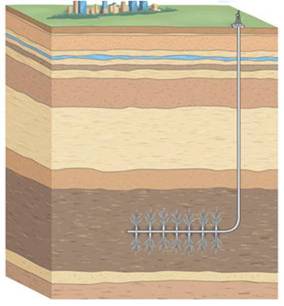
Gas extraction from shale rock formation
------------------------------------------------------------------------------------------------------------------------
Great Falls, Virginia, USA
July 10, 2011
- Bookmark :
- Digg
- del.icio.us
- Stumbleupon
- Redit it
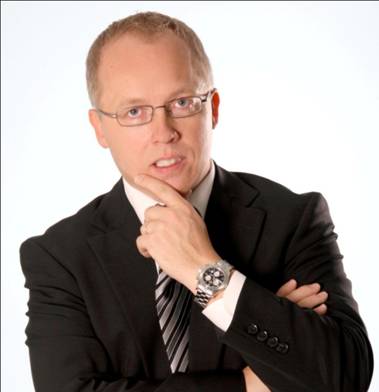
Palle Gravesen Jensen
A Danish expat to Lithuania, owner of two manufacturing companies, Electronic House and Metalco Baltic. Member of the board of the Danish Chamber of Commerce (DCC) in Lithuania. His family was one of the three families founding the Vilnius International School.
Text: Palle Gravesen Jensen
There are a number of issues to discuss with regards to Lithuania of today, the country I made my own 16 years ago, moving from my homeland Denmark.
One particular question, however, comes to my mind again and again: What is this country going to live on 20 years from now. It is a big question. My concern is there will not be much at all if nothing is done immediately.
Start with innovation
At DCC (Danish Chamber of Commerce) we recently took an initiative on innovation, by organizing an international conference, to try to understand whether there are creative products, ideas, businesses in Lithuania that could have potential export value. Because it is from innovation the real economic and income growth must come.
Let us not confuse the concepts of innovation and entrepreneurship. Entrepreneurship is about starting up businesses, not creating something. I myself am not an innovator, I am an entrepreneur.
Though from my earlier experience in Denmark I know that a lot of industries are driven by innovations. But there is a long pipeline: there has to be a favourable environment, starting from the education system. It also has to become socially acceptable to be an innovator – and to fail – because most innovators do fail, only a few pass through that little opening to success. When they do succeed, industries start building around them. This takes time, some 20 years, so if we in Lithuania want to be there in 20 years, we must kick off this innovation process today.
Why would innovators be socially unacceptable, one could ask? Well, I often hear people here saying: “I know this guy, he tried this and that, and he failed. What a fool! We could have told him that he would.'
Such an attitude kills innovation here. In the U.S., on the contrary, if you fail three times and succeed at the fourth attempt, nobody talks about those three attempts; they are simply seen as a maturing process leading to success in the end.
Today, Lithuanian biotech and laser firms are quite innovative, but I see no wide base for innovations to spread within these fields, not enough skilled engineers, plus a lot of barriers for foreign professional specialists to come here.
Politically I do not see a big wish to invite engineers from India, China or the U.S., there is no system to facilitate such exchanges, like the ones we have in Denmark.
I’ll leave Lithuania if progressive taxation is introduced
There are a lot of entrepreneurial start-up firms with staff of one to five persons here in Lithuania. I like that. What I do not like is that these entrepreneurs – and I know quite a few of them personally – are very proud when talking about how much taxes they avoid paying. A lot of their cash flow is black money.
That is my opinion like cancer to the entrepreneurship base. I find it very short-sighted that their main goal is to collect as much income as possible over the shortest time possible. Their business will never have any real value, and their growth potential will remain weak.
The fact is that taxation in Lithuania is fine. But the government should not push it harder, and not introduce progressive taxation.
If the progressive taxation system will be introduced, I would leave Lithuania instantly, and I know more businessmen would do the same.
I know of a specific case where a EUR 3m FDI investment project in IT services recently turned away from Lithuania and instead heading toward the other two Baltic States – only because the progressive taxation debate started here.
We have progressive taxes in Denmark. It is working but it is a mess, and there is no way back to a flat system. The biggest fault with progressive taxes is that one is being taxed so badly on the last part of the income that one is losing the motivation to do an extra effort. And innovation is a lot about that extra effort.
Barclay Bank’s ‘investment’ is a bad example of how to attract FDIs
I think the government’s support of the recent Barclay Bank’s investment here is a very bad example of how to attract FDIs to Lithuania.Their investmenthas nothing to do with innovation. They hire relatively inexpensive local IT staff, drain the local IT firms of talented young staff, and push salaries in the market up. It may be a flashy thing for the government to show to the world, but does Lithuania want to be a big back office, nothing more?
I know entrepreneurs from a few small IT firms here. They are crying their hearts out because their young software engineers, who had ideas and still being open-minded, opted for a higher salaries and safer jobs with companies like Barclays instead of staying with entrepreneur-innovator type of employers.
On the other hand, there is no support from the government to foster innovation in traditional manufacturing sectors, no effort to develop industrial parks suitable for innovative companies. There are a few so-called valleys in development for IT and biotech firms. But traditional industry is the base. Once innovations are developed, they will need support from traditional industry.
This government’s inactivity
Due to this government’s inactivity, we at DCC recently started developing clusters for various sectors, such as energy efficiency and innovation. These are not internal DCC initiatives – we only provide a launch pad for such ideas that we believe will develop on their own. But it is surprising that such initiatives do come not from Lithuanian organisations.
In general, Lithuania needs to make a real strategy for the next 10-20 years that would cover such fundamentals as education, infrastructure and social welfare.
Lithuania’s role as sub-supplier is coming to an end
Lithuania industry is today to a high degree a sub-supplier to Western industries, but this is a trend that soon will come to an end. My two companies are sub-suppliers, and every day I am doing my best to add value in all possible aspects – engineering, logistic solutions, warehouse management; taking over greater responsibility financially from our partners. Because if I am not able to adapt to the new times and challenges, then the only next step, at least in my industry, is to leave and find another country for my production activities.
I know for sure that exactly this will happen if we do not promote innovation. I myself do business with export markets, my clients are global innovative companies. I am very focused on getting my hook out on globally listed companies, such as 3M and ABB that are among my clients.
Sometimes such clients come themselves. We are, for instance, now starting to work with a new such company that has learned about us from the company Bombardier which we already are a supplier to.
90% of new business leads for my companies are generated by word-of-mouth advertising. For the first time in ten years we will now soon participate in an exhibition in Denmark.
EU funding systems do not work properly
Right now I am applying for EU aid to support our participation, but during the last couple of months I was very close to giving up. Because the system is not working. The aid agency is bureaucratic. The aid programmes are in constant change. Aid seekers have to spend big resources to adapt to the programmes instead of having programmes that are adapted to industry needs.
At the end of the day, this aid turns out to be twisting papers, moving money around, while the effect is minor.
In comparison, in Denmark a lot of aid money was injected into disadvantaged regions where we had structural problems like high unemployment rates and lack of jobs.
A good example is Vestas, the world's biggest wind mill turbine manufacturer. The company was established in one of those disadvantaged regions, and the EU money was invested in the development of local infrastructure, helping Vestas to attract skilled engineers and build a whole industry.
Increasingly complicated to find skilled labour
Internal training used to be enough to get skilled enough labour in this country. But now, as we would like to employ engineers with specific skills, I feel that this becomes rather complicated. I have talked to professors at the VGTU technical university in Vilnius and was told that engineers with such skills are not to be found here. So I am even considering filling these positions with Danish staff. I did employ welding engineers from Denmark before the crisis because the local market was drained. One reason was labour emigration, another one was that a lot of skilled employees went into the construction business to make quick money. So for a slightly higher salary I actually hired employees from Denmark with exactly those specifications that I needed. They would fly in, work for a week, then fly back home, then fly in again, and so on for some months.
In general, the government in Lithuania should put more focus on re-educating unemployed people. Another thing that could be done is to give a different status for those who simply are not fit to work – I have had such people sent to my companies by the local labour exchange. They should not be listed as available workforce.
I support the government’s plans to raise the minimum wage. When we hire blue-collar staff to do work that requires no specific skills, we start with a minimum wage of LTL 800 gross for the test period. If the wage is raised to LTL 1,000 as is debated today, it would put pressure on wages of all employees because skilled employees would then earn relatively less and demand more for their skills.
Therefore, the government should consider raising the tax-exempt minimum in order to raise the living standards. If the government is worried about budget revenue, means of collecting it are many but taxing labour too much is the worst path to follow.
I voted for Arturas Zuokas as Mayor of Vilnius
In the recent municipal elections here in Lithuania, I myself voted for the man who has now been re-elected Mayor of Vilnius, Arturas Zuokas. I know his background, I know all the negative stories about him but I think you could hear similar stories about most of the people in power here in this country.
As background for my choice I decided to focus on how the latest Vilnius Councils have been performing. The former council was simply sitting there waiting for the crisis to end, during a period when I believe there should have been made a lot of dynamic moves.
Vilnius was falling apart, and now needs the energetic guy back. Some of Zuokas' decisions will be wrong, some may be questionable, but there will be other decisions that will again push Vilnius forwards to a better future. Such as a metro system and a new airline for Lithuania.
I also hope that our government will take initiatives similar to those I believe Zuokas now will be taking, and that there finally will be serious focus on innovation as a basis for further development of Lithuania.
I would love to see a Lithuania that prospers today as well as in 20 years!
(This blog is based on an interview I gave to the business publication ‘news2biz’ in June 2011.)
- Bookmark :
- Digg
- del.icio.us
- Stumbleupon
- Redit it
- Posted by - (0) Comment
WORLD LITHUANIAN ECONOMIC FORUM
VILNIUS, 4-5 JULY:

A successful event, but
will it create any ripple effects?
The World Lithuanian Economic Forum (WLEF) is still in full swing as I write this. So I should be careful about drawing too many conclusions yet. What I have seen so far, is an event where some 400 people meet to discuss what more can be done to collect Lithuanians from all over the world to joint efforts for their fatherland. More investments, more engagement is being requested. The mood is good, the speeches and discussions as well. Yet I can not help but wonder why only about 100 of the 400 attendees are foreign-Lithuanians. Nearly half of all who call themselves Lithuanians live, after all, far from their country of origin, and they should constitute a very significant resource for further development of this nation.
It was also remarkably few business people represented, as a percentage of the number of participants, hence the business-to-business impact can hardly have been very large.
Yet it is my conviction that this is an event that has a future, and I hope to see WLEF in Vilnius also next summer.
These are mythree suggestionson how tofurtherdevelop and enhance the event:
1. MORE BUSINESS-TO-BUSINESS
The president, government, organizations and businesses should work together to make WLEF even more business-oriented, to invite and prepare for specific interaction activities between local and international companies. Local organizations and their sister organizations in other countries, like Rotary Clubs, should be integral parts of the event, planning well in advance for face-to-face meetings at the event.
2. A PERMANENT, YEAR-ROUND OPERATION
ICC, together with other organizations, should establish a permanent secretariat, with state support, for a year-round operation of the kind of activities that should appear in each year's WLEF summer event.
3. AN EVEN BROADER FORUM – FIRST WEEK OF JULY EVERY YEAR
The WLEF forum should become an annual tradition, going on for a whole week every summer, for example during the first week of July in connection with the celebration of King Mindaugas coronation on 6 July. The event should include several types of activities; within business, culture, festive gatherings, etc. I think this would make more foreign-Lithuanians and their families come to participate. The weaving of contacts would also be improved by more social interaction, and the many who live outside the home land will increasingly feel that they are appreciated and welcomed home!
Aage Myhre, Editor-in-Chief
|
THE OPENING SPEAKERS |
|
|
|
|
|
THE KEY-NOTE SPEAKERS |
|
|
|
|
|
THE ROUND TABLE PANEL DEBATERS |
||
|
|
|
|
|
|
|
|
The round-table debaters had some good points in yesterday's WLEF meeting. The question they all would answer, was what they thought should be done to make Lithuania more progressive and competitive in the future.
EDUCATION, EDUCATION, EDUCATION
"Education, education, education" was David Passig's formula, with reference to statistics showing that there is a clear correlation between education level and economic growth in a country.
Education Minister Steponavicius noted dryly that there still are too many students who are more concerned with getting a diploma than to acquire acquire real knowledge, concluding that the quality level of higher education in Lithuania must be raised. "20 years have given us the time we need to find our place in the context of 'global Lithuania. Now it is high time that we have developed an education reform that works," the Minister stated.
MINISTRY OF TALENT – BRAIN CIRCULATION
Omnitel's President Antanas Zabulis, suggested that the Ministry of Education should perhaps change its name to 'Ministry of Talent' and also mentioned that Lithuania no longer should focus neither on brain drain nor on
brain gain, but on brain circulation.
By virtue of his position he also noted that broadband and other internet Internet solutions are highly essential for a good development of Lithuania. "It is no longer enough to have good ideas, speed is now just as important," he said.
ISM's President, Nerijus Pačėsa, meant that more private universities (as ISM is) would raise the education standard in this country, referring to the fact that the highest graded universities in the U.S. and Japan all are private.
"Also, Lithuania should adopt financing of education through loans, as in Western countries, not leave it all state-financed as is today's situation," he added.
IMPROVED COLLABORATION GOVERNMENT – BUSINESS
Economy Minister Žylius expressed eagerness to improve opportunities for collaboration between government and business. He also said that the
financial tools one now has access to through EU funds, etc. should be applied to the development of mechanisms that promote future developments within the fields of technology, industry, FDIs, etc.
"The government should not tell business what the future will look like, but be a predictable, good facilitator for the business community to see and discover future opportunities," said the Minister.
LET'S BUILD THE BALTIC STATES' LARGEST CONFERENCE CENTRE
Air Baltic's chief in Lithuania, Tadas Vizgirda, referred to some rather gloomy
statistics about tourist traffic into Lithuania. The sad fact is that Latvia has around 5 million visitors per year, while Lithuania, a country with 50% more
inhabitants, is visited by just 1.5 million annually." An enormous potential
that our tourist authorities should no longer ignore, especially considering that every tourist will leave around LTL 600 in tax money," he said, adding that Lithuania would be able to obtain a solid position for professional
travelers if there was invested in building the Baltic States' largest conference centre right here over the next few years.
THE EVENING MUSIC
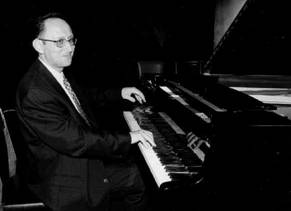
Zecharia Plavin,
a famous Israeli pianist, born in Lithuania, entertained the WLEF delegates
with superb interpetations of Ciurlionis, Liszt and Ravel.
|
THE ORGANISERS |
||
|
|
|
|
ICC Lietuva is organizing the World
Lithuanian Economic Forum (WLEF)
The goal of the World Lithuanian Economic Forum is to draw Lithuanian business people, economists, politicians and scientists from the entire world into Lithuania's economic life, to strengthen their relations with Lithuania, to encourage them to develop business here, to help attract investments to Lithuanian companies and to create a global network of Lithuanians from all the world.
The Forum is organized by the Lithuanian Business Confederation | ICC Lithuania in cooperation with governmental institutions as well as business companies.
The organizers are doing a great job that they deserve very much honour for!
- Bookmark :
- Digg
- del.icio.us
- Stumbleupon
- Redit it
- Posted by - (3) Comment
|
|
Professor David Passig at the ’World Lithuanian Economic Forum (WLEF)’: The dawning of a new civilization
|
“Brain power – knowledge, skills, and human personality quirks – will combine with computer power in order to think, reason, communicate, and create in ways we can scarcely even contemplate today.”
See Professor Passig’s WLEF slideshow here: http://www.passig.com/vault/presentations/TechSingularityEng_Short.pdf

The futurist Ray Kurzweil is one of those Professor Passig refers to when explaining the theory of ‘Singularity’.
In his presentation at the World Lithuanian Economic Forum, Professor Passig also referred to the futurist Ray Kurzweil, who defines the concept of ‘Singularity’ in terms of the technological creation of superintelligence, arguing that it is difficult or impossible for present-day humans to predict what a post-singularity world would be like, due to the difficulty of imagining the intentions and capabilities of superintelligent entities.
Kurzweil believes that we're approaching a moment when computers will become intelligent, and not just intelligent but more intelligent than humans. When that happens, humanity — our bodies, our minds, our civilization — will be completely and irreversibly transformed. He believes that this moment is not only inevitable but imminent.
According to his calculations, the end of human civilization as we know it will take place around year 2045.
The Singularity is an era in which our intelligence will become increasingly nonbiological and trillions of times more powerful than it is today—the dawning of a new civilization that will enable us to transcend our biological limitations and amplify our creativity.
|
Technological singularity refers to the hypothetical future emergence of greater-than human intelligence. Since the capabilities of such an intelligence would be difficult for an unaided human mind to comprehend, the occurrence of technological singularity is seen as an intellectual event horizon, beyond which the future becomes difficult to understand or predict. Nevertheless, proponents of the singularity typically anticipate such an event to precede an "intelligence explosion", wherein superintelligences design successive generations of increasingly powerful minds. The term was coined by science fiction writer Vernor Vinge, who argues that artificial intelligence, human biological enhancement or brain-computer interfaces could be possible causes for the singularity. The concept is popularized by futurists like Ray Kurzweil and widely expected by proponents to occur in the early to mid twenty first century. |
- Bookmark :
- Digg
- del.icio.us
- Stumbleupon
- Redit it
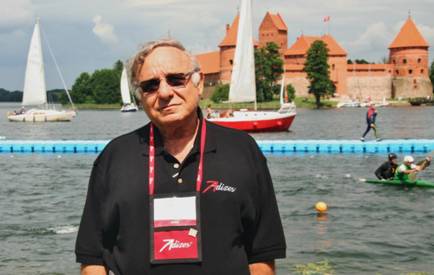
“I am an organisational healer, providing and working with change management for companies, organisations and governments. But not all listen to my advices,” said Dr. Ichak Adizes when we sat down at a lunch table in Trakai Saturday, using the former Serb leader Milosevic and the Greek Government as examples of exactly that.
The annual ‘Adizes International Convention’ took place in Vilnius this weekend. It was the 33rd annual convention for the global organisation that Dr. Adizes started three decades ago. And on Saturday all the convention delegates from around the world were bussed to Trakai for an ‘almost self-baked lunch’, a visit to the castle; plus a little glimpse into the past of the Karaim people who came to Trakai from Crimea 600 years ago, still today representing a huge surprise to most visitors meeting these colourful, Turkic people in far north Lithuania.
My conversation with Dr. Adizes this Saturday afternoon was rather brief and superficial. There were simply too many people and too much noise around us. I will therefore leave it up to his own articles/blogs (below) to speak for him this time.
We did, however, get the opportunity to touch several aspects of what he has experienced during his long life as a consultant and advisor for businesses, organizations and governments around the world. His story about his talks with Milosevic in 1991 follows below.
The fact that his advice to the Greek government, about 20 years ago, regarding the country's way to plan their finances, were not listened to or followed, is a topic we will try to return to at a later date. Just sad to see how much it now costs the country to have been bad listeners when it still was plenty of time to choose another course...
Maybe it’s time now for Lithuania to seek professional advice?
Aage Myhre, Editor-in-Chief

Nurit and Ichak Adizes, Shimon M. Rojany and Gad Mizrahi from the global Adezis organisation were all deeply impressed by the story about the Trakai Karaims. Here in front of the Karaim temple in Trakai, the ‘Kenasa’.
Dr. Ichak Adezis
Dr, Ichak Adizes was born in Skopje, Macedonia, the 22nd of October 1937. In 1948, his family moved to Israel, where he completed his undergraduate studies. In addition to attending college, he also applied for the army.
Dr. Adizes has a Ph.D. and M.B.A. from Columbia University and a B.A. from Hebrew University. He works in English, Spanish, Hebrew, Serbian, Croatian, Bosnian and Macedonian languages.
His works are carried out through the Adizes Institute, a consulting company he founded with offices in 15 countries. The Adizes programme for leading organizations to prime performance, has been used successfully by over 1,000 organizations worldwide, ranging in size from Fortune 100's and non-profits to start-ups and mid-sized companies. As an advisor to foreign governments, Dr. Adizes has consulted with the Prime Ministers and cabinets of Israel, Sweden, Greece, Brazil, Ghana, Iceland, Mexico, Macedonia and others.
Dr. Adizes' work has been featured in Inc. Magazine, Fortune, The New York Times, London Financial Times, Investor Relations Daily, Nation's Business, World Digest and others. He is the author of 13 books that have been published in more than 50 editions and 26 languages. His Corporate Lifecycles: How Organizations Grow and Die and What to Do About It is regarded as a classic in management theory. Executive Excellence, one of the most prestigious business magazines in the United States, ranked Dr. Adizes 28th on its 2008-2009 list of 100 Top Leadership Consultants. He has lectured in more than 40 countries.
Adizes' simple ten-stage corporate life cycle model is an elegant way to learn and understand the typical life-cycle stages that many businesses pass through, from conception to cessation, and is an example of the fine work and thinking of the Adizes Institute and its founder, which extend considerably beyond this model.
There is no pre-set timescale for this corporate life-cycle, and many organisations do not fit this model. However the life-cycle stages that Ichak Adizes describes in his model provide a useful basis for understanding a fundamental perspective of organisational change, and the principle that organisational ageing, with all that this implies, is inevitable.
One of the main challenges for mature corporations is therefore to seek reinvention through new business development, before it's too late, often through acquisition of other businesses in infancy stage, or by developing new 'infant' business divisions within the parent corporation.
The model also provides a basis for useful team training activities, for teaching people about organisational development stages, which is helpful for selling, management and understanding organisational cultures and systems.
The Adizes Institute is headquartered in Carpinteria, 12 miles south of Santa Barbara, California, being the home of the Adizes Methodology. The Institute serves as the central hub for the training and certification of Adizes Associates. Individuals from Adizes Offices around the world, as well as clients who have licensed and adopted the Adizes Methodology for use within their own organizations.
The institute is focused on creating an integrated network of professionals who practice structural, systemic and participative change in everything from micro systems (individuals and families) to macro systems (organizations and societies). In their promotional material they claim to be committed to being a world leader in developing a unifying theory and practice of change based on mutual trust and respect.
The Institute is also the centre for the development of all Adizes products and services. These include books, audio and video recordings, and software applications of the Adizes Methodology.
|
Dr. Adizes' ten stages of corporate life-cycle |
|
|
| 1. COURTSHIP 2. INFANCY 3. GO-GO 4. ADOLESCENCE 5. PRIME |
6. STABILITY 7. ARISTOCRACY 8. EARLY BUREACRCY 9. BUREAUCRACY 10. DEATH |
|
- Bookmark :
- Digg
- del.icio.us
- Stumbleupon
- Redit it
VilNews e-magazine is published in Vilnius, Lithuania. Editor-in-Chief: Mr. Aage Myhre. Inquires to the editors: editor@VilNews.com.
Code of Ethics: See Section 2 – about VilNews. VilNews is not responsible for content on external links/web pages.
HOW TO ADVERTISE IN VILNEWS.
All content is copyrighted © 2011. UAB ‘VilNews’.
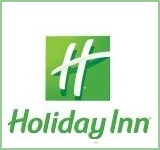
 Click on the buttons to open and read each of VilNews' 18 sub-sections
Click on the buttons to open and read each of VilNews' 18 sub-sections 



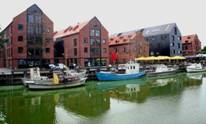



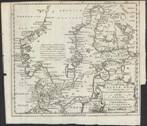
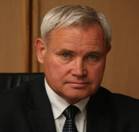
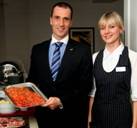
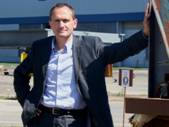
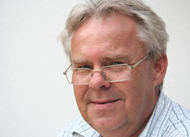
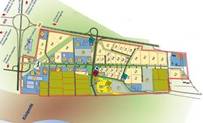
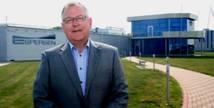
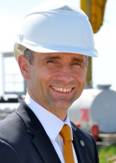
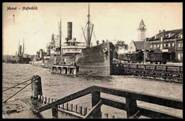


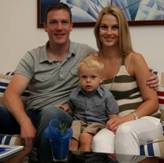

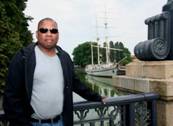
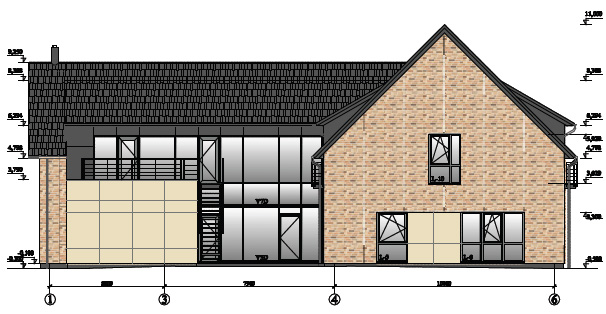














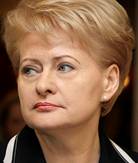
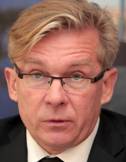
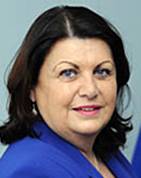

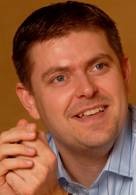
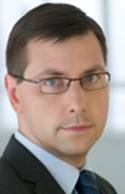
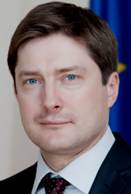
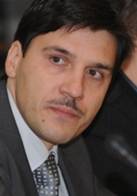
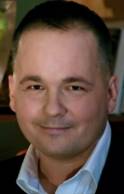
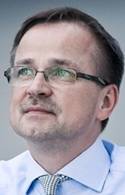
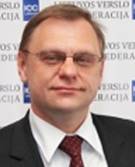
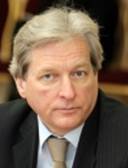



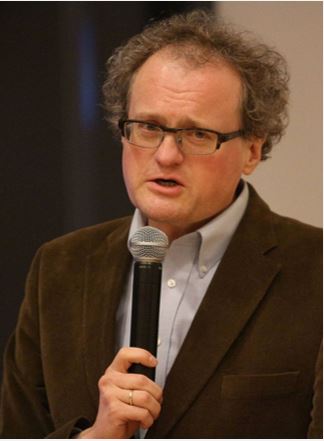
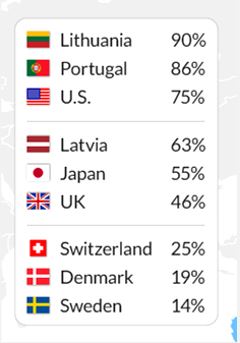
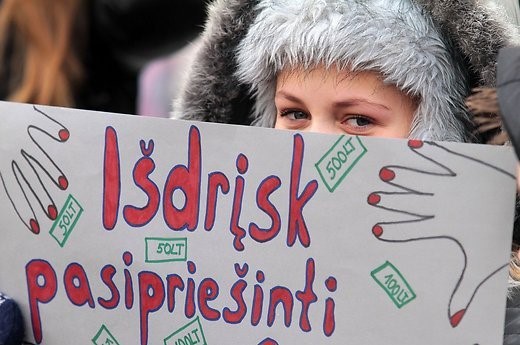


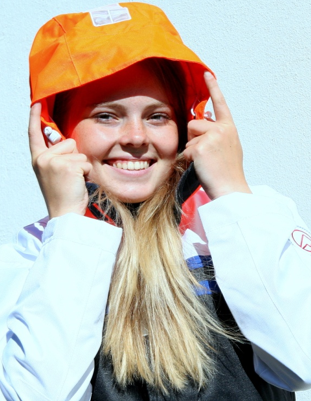
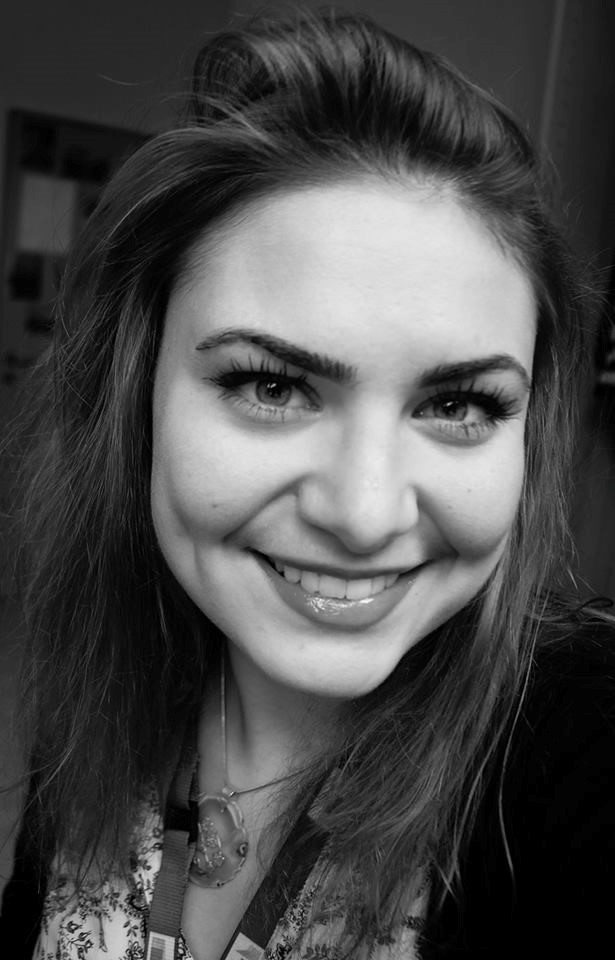
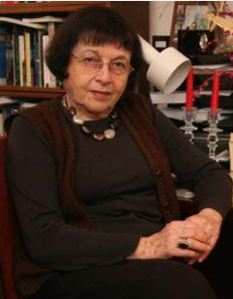
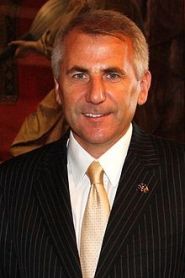
.jpg)
